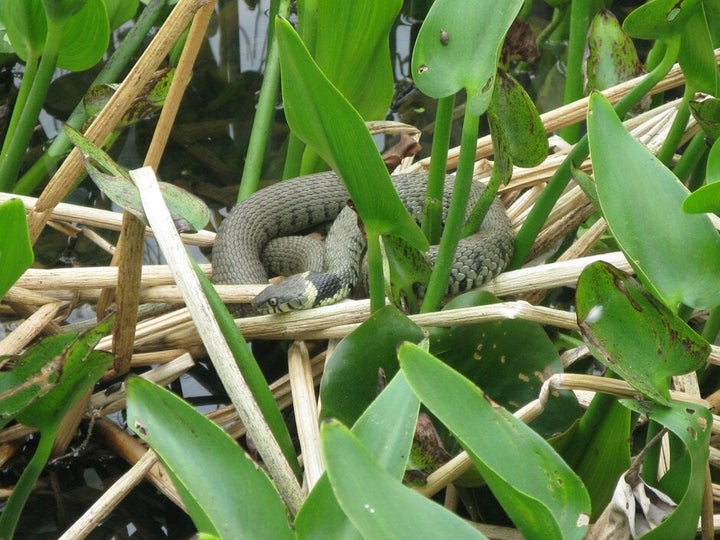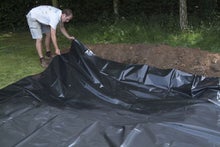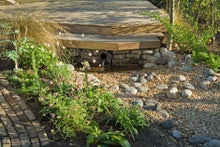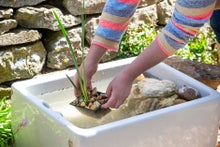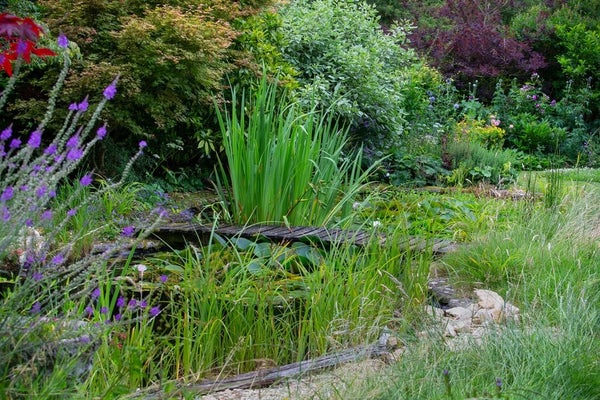
Quick facts
Ponds don’t have to be large, even a mini pond in a pot will benefit wildlife
Make sure creatures can get into and out of the pond easily
Add suitable plants, both in and around the pond
Making a new wildlife pond
Before you start making a new wildlife pond, there are several aspects to consider:
Sloping sides –at least one side of the pond should have a long, shallow slope. This allows easy access for wildlife and, when water levels fluctuate, creates a damp habitat for smaller creatures. If you’re making a container pond that isn’t sunk into the ground, add a ramp on the outside and the inside.
Liner – butyl liners are the easiest way to create a natural-shaped pond. Pre-formed plastic or fibreglass ponds don’t usually have a shallow slope (see above), so you would need to add a ramp. For larger, natural ponds consider liners of puddled clay or sodium bentonite.
Size and depth –the larger the pond, the more wildlife it will attract. But size isn’t everything – even a mini pond in a pot will provide a habitat and water source for plenty of small creatures. Ideally, aim for a depth of 20–60cm (8in–2ft), which varies across the pond, as this will suit the majority of pond flora and fauna.
Location –shade over part of the pond helps to reduce problems with algae and suits many pond plants and animals. But make sure that at least part of the pond is in full sun. This will help the water warm up quickly in spring, making it more attractive to spawning frogs and toads.
Timing – autumn and winter are ideal times to make a new pond. See the following step-by-step guides:
And don’t forget, a pond is not your only option – wildlife will make use of all kinds of water features in a garden, from a simple bird bath to a rain garden. Find out more about the many wildlife-friendly options in our guide to garden water habitats.
Around your pond
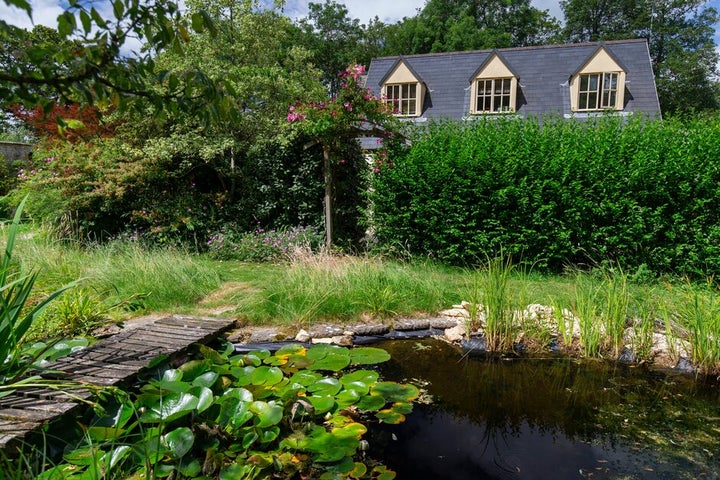
Create adjacent habitat – a pond doesn’t just work in isolation, it’s part of a network of habitats around your garden. Help wildlife move between these areas by letting grass grow along one edge of the pond (tall grass gives perfect cover for young toads and frogs leaving the pond), growing some denser shrubs nearby (so birds can approach the pond safely, with cover from predators such as sparrowhawks) and keeping at least one section of the pond edge open and sunny to allow for basking reptiles such as grass snakes.
Make a drinking spot for big and small – a layer of gravel, mud or large flat stones positioned on the shallow sloping side of the pond will create a perfect habitat for amphibians and insects. It also allows birds, hedgehogs and smaller insects such as honeybees and hornets to drink without risk of falling in the water.
Hide the liner and soften the edges – the water line in a wildlife pond will naturally fluctuate, but as it drops this can expose the pond liner. One way to avoid this is to create a ‘beach’ of gravel or pebbles around the edges, as described above. But an alternative is to buy a ‘stone liner’, which has a layer of gravel embedded in the top. This can be bonded to the top of the pond liner to help disguise it.
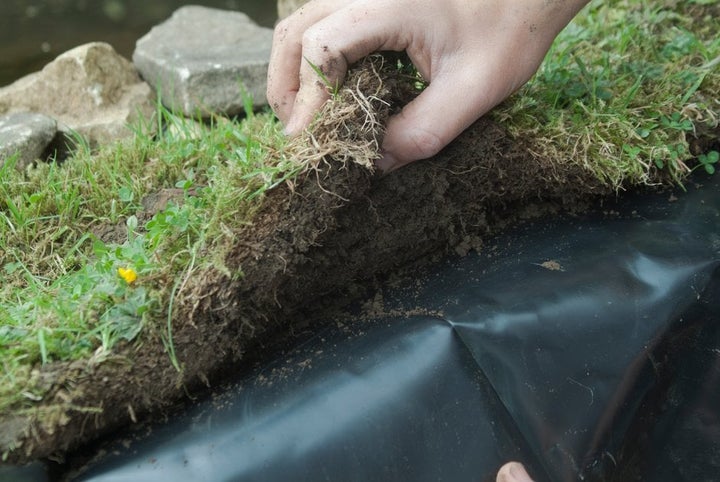
Laying turf up to and over the edge of the pond rim can look very natural, but it doesn’t take long for the grass and grass roots to grow right into the water. The wicking action can draw water out of the pond at a surprising rate, especially in hot weather. So it’s best to stop the turf short of the edge and use an alternative liner cover.
Top tip
Decking over a section of the pond will give good wildlife-watching opportunities, but always ensure children are supervised.
Adapting an existing pond for wildlife
Ponds that weren’t specifically designed for wildlife can easily be adapted to welcome a wider range of creatures. Autumn is the least damaging time for making changes, after the height of the breeding season but before amphibians go into hibernation.
Fish – these are top predators in a garden pond, reducing , and they also rasie nutrient levels, which encourages algae and blanketweed. So if you’ve inherited a pond with lots of fish, perhaps re-home them to another fish pond or make a new wildlife pond elsewhere in your garden.
Pumps and filters – if your pond contains fish, chances are it will also have a pump and filter system, to help keep the water clear. A wildlife pond doesn’t need a filter, but you may wish to keep the pump, to run a cascade or fountain, for instance. Just make sure the pump has a ‘wildlife protection system’ to prevent tadpoles and other small pondlife being sucked into it.
Plants – adding plants in and around the pond will provide cover and habitats for wildlife. See below for more details.
Steep sides – to help wildlife get in and out, build a natural-looking slope of pebbles or add strategically placed rocks. Or partly submerge a large branch or log, weighted down to hold one end below the surface. Alternatively, fit a wooden ramp, cut with grooves or covered in chicken wire to provide a better grip.
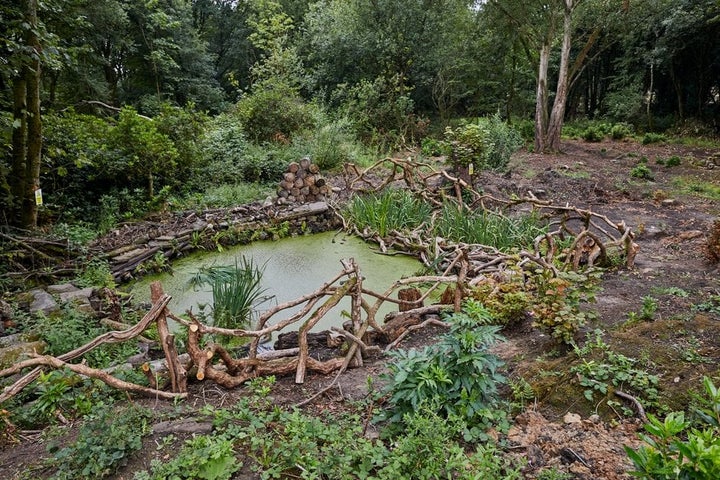
Planting ponds for wildlife
Mid-spring to early summer is the best time for planting, once the water has warmed a little and plants are starting into growth.
plants provide good habitats, but so too can many non-natives and ornamentals. Some aquatic plants can be very vigorous, so check they’re suitable for your size of pond before you buy. And take care to avoid known invasive aquatic weeds.
There are four main types of plants to include in a wildlife pond:
- Underwater plants for cover – oxygenators such as hornwort (Ceratophyllum demersum) or water starwort (Callitriche autumnalis) give tadpoles and other larvae plenty of underwater cover from predators.
- Plants with tall stems for emerging larvae – such as water iris (Iris ensata). The larvae of damselflies and dragonflies need stems like this to crawl up when they’re ready to leave the pond and turn into adults.
- Floating plants for resting stations – such as waterlilies (Nymphaea) and water hawthorn (Aponogeton distachyos). Pondlife will rest on the leaves, which also help to shade the water in summer.
- Pollinator-friendly marginals – such as lesser spearwort (Ranunculus flammula), flowering rush (Butomus umbellatus) and marsh marigolds (Caltha palustris), whose flowers will attract bees, hoverflies and more.
Also see our guide to pond plants.
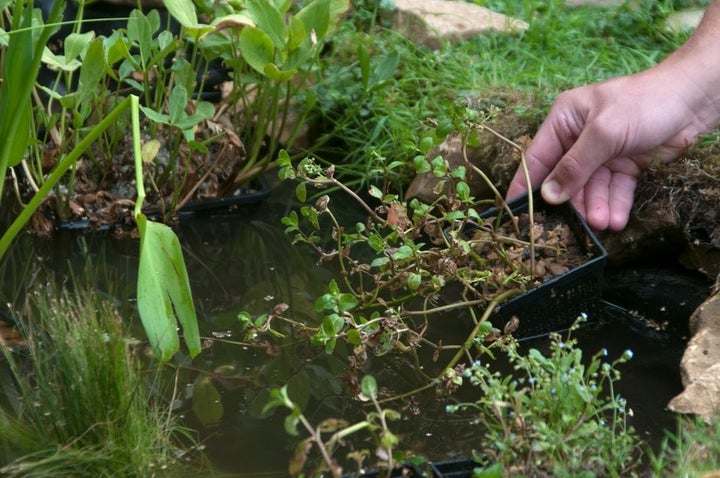
How to plant
Most pond plants are best planted in aquatic baskets, using a loam-based or aquatic . For full details, see our guide to planting aquatics.
To help get plants established in tricky locations, such as steep-sided ponds, you can try:
- coir logs or mats pre-planted with native pond plants, such as soft rush (Juncus effusus), purple loosestrife (Lythrum salicaria) and yellow flag iris (Iris pseudacorus). These are great for anchoring to bare margins of new wildlife ponds or even the banks of a stream or river, if your garden backs onto these.
- planting pouches can be suspended over the lip of a formal pond and secured in place with a large stone, to stop them falling in. These are useful for establishing plants in a pond with a flat rim and very steep sides.
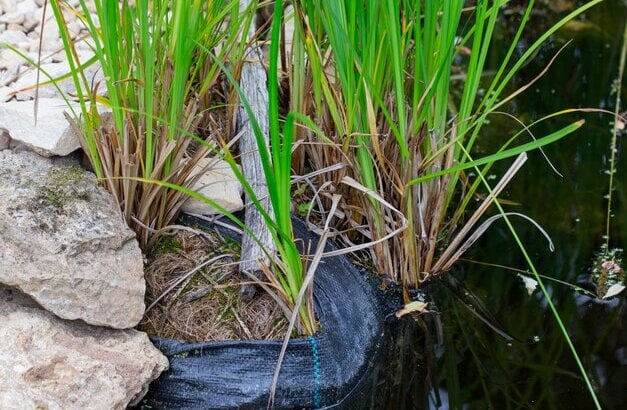
Looking after wildlife ponds
It’s generally best to disturb a wildlife pond as little as possible, but there may be a few jobs that need doing – if so, here’s how and when to tackle them:
- Weed and algae control – a large expanse of open water isn’t essential for a good wildlife pond. Most creatures prefer an underwater maze of plants, among which they can hunt, hide, feed and breed. If you do feel you need to do some removal, don’t take out too much in one go. Although the standard advice is to leave the vegetation on the pond edge to allow creatures to escape back into the water, sadly many stay trapped regardless.
- Removing leaves – don’t worry if a few leaves end up your pond, as there is little evidence this is bad for pondlife. However, if lots of autumn leaves fall into the water, rake or fish out some with a net before they sink to the bottom.
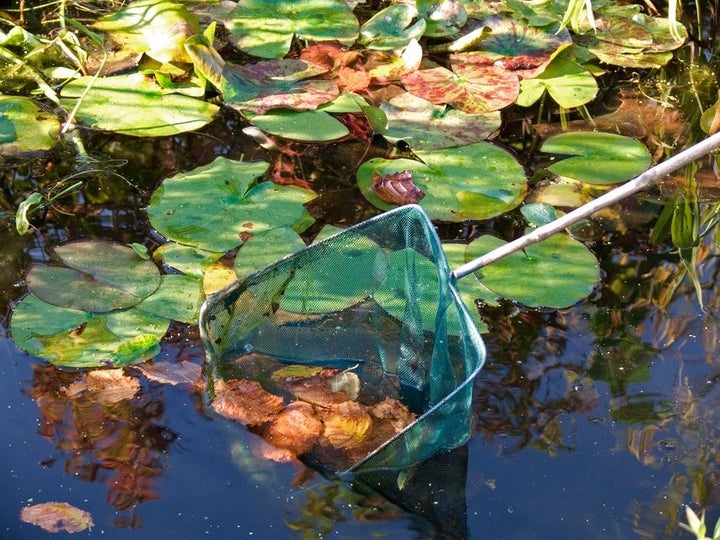
- Topping up the water level – don’t be too hasty to top up your pond during dry weather. Seasonal ponds are a natural feature in the UK, filling up in winter and occasionally drying out in summer. This can favour certain animals, such as newts, which can survive in the mud, unlike the fish that predate on their larvae. If additional water needs to be added, use rainwater – tap water should only be a last resort.
- Silting up – avoid removing accumulated sediment if possible, but if essential, then tackle it in early autumn. Only remove half the excess sediment at a time though, to minimise the loss of mud-dwelling creatures and their habitat.
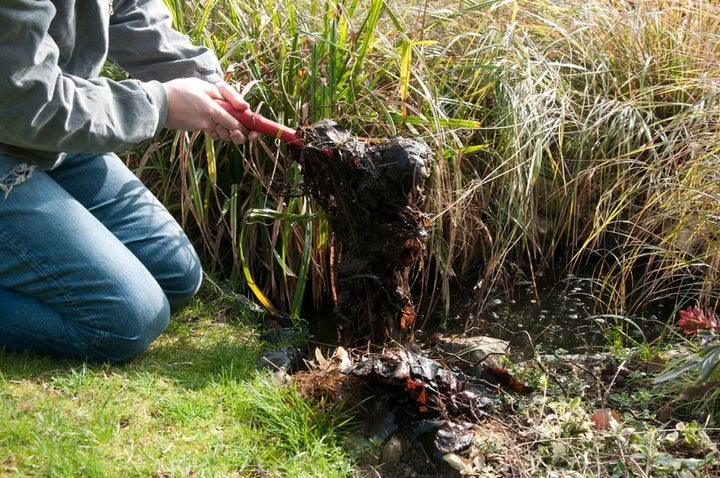
- Cutting back plants – if you’ve allowed the grass to grow long on one side of the pond, strim or mow it in late autumn after young amphibians have left the pond. Delay cutting back faded marginal plants until late winter to help give maximum protection for invertebrates.
Wildlife spotting
Wildlife will find a new pond surprisingly quickly – pond skaters and diving beetles can arrive within a few days or weeks, and damselflies and amphibians could easily be on the scene within the first year.
Although it might be tempting to move frogspawn, pond sediment or even pond water from one pond to another, this isn’t a good idea as it can inadvertently introduce diseases or species.
Top tip
Shine a torch into your pond after dark in early summer to see if you can spot any newts.
Make sure you have somewhere to sit near your pond, to watch the wildlife that appears – perhaps a secluded bench, some decking along the water’s edge, or even a small jetty or bridge, so you can look down into the depths easily.
So which creatures might you spot in and around your pond?
- Frogs, toads and newts will use even small bodies of water to breed – see our guide to garden amphibians
- Caddis flies, damselflies, dragonflies, mayflies, pond skaters, snails and water beetles breed in water
- Large ponds will support waterfowl, including mallard ducks, moorhens and coots
- Birds such as swallows and house martins will pick off insects from above the water surface and use muddy areas for nest building
- Grey herons can be regular visitors to even a small pond, hunting for fish and amphibians
- Even grass snakes – who are excellent swimmers – may be seen hunting in garden ponds
